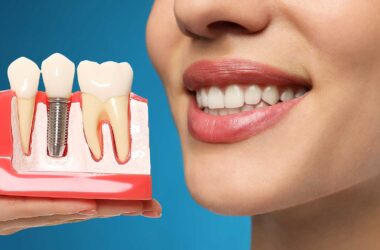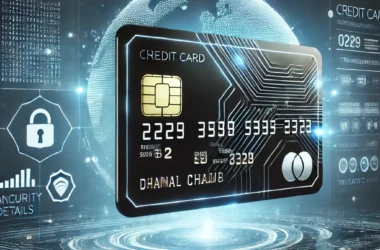The formation and stubbornness of pigmentation are troublesome issues for many in pursuit of beauty. Though often small in size, these spots always manage to find a place on the face. Countless people have tried various self-proclaimed miraculous remedies and skincare products, but these are usually only quick fixes; pigmentation re-emerges time and again, much like a whack-a-mole game, causing deep frustration.
One reason for this recurrence may be due to many only lightening the surface pigmentation while overlooking the deeper spots. It’s important to note that invisible deep pigmentation may surface due to prolonged UV exposure or poor lifestyle habits. These deep spots are hard to detect and are usually only discovered with the help of professional skin examination equipment.
Pigmentation can be categorized according to the different depths of the skin:
- Surface pigmentation, including sun spots, acne marks, moles, freckles, etc., which can be directly observed with the naked eye.
- Deep ultraviolet (UV) pigmentation is closely related to photoaging, primarily the buildup of melanin caused by ultraviolet rays.
- The deepest level brown spots are often related to melasma and such, usually hidden in the basal layer or the dermis, and might surface due to aging, prolonged sun exposure, or compromised skin barrier functions.
Therefore, effective pigmentation treatment requires targeting both superficial and deeper pigmentation.
Most skincare products on the market prioritize whitening effects over pigmentation reduction because while some ingredients can inhibit the formation rate of melanin, they do not break down existing melanin efficiently. This means using skincare products to remove existing pigmentation may not be very effective due to the skin’s limited natural renewal capabilities.
So, how can one quickly and effectively remove pigmentation? The answer might lie in medical aesthetic technologies, such as picosecond laser treatment. Its principle is to shatter the melanin particles with laser and then let the body’s metabolism eliminate them. This method, compared to traditional lasers, has faster, more potent energy output, breaking melanin into finer particles for quicker clearance by the body.
Compared to regular skincare products, picosecond laser treatment has the following advantages:
- It works deeper, precisely breaking down deep melanin.
- It has a significant effect on lightening pigmentation, especially against those deep spots that are not directly visible to the naked eye.
Using laser technology’s high energy, it is possible to perform pigmentation treatment on a quail egg. This technology breaks up the larger areas where melanin is concentrated, thereby significantly shortening the decomposition and metabolism process of the melanin. As a result, patients can notice an improvement to some extent after the first treatment, although the specific results vary from person to person.
Ultra-picosecond technology not only efficiently shatters melanin, but also promotes the skin’s self-repair and cell renewal. Particularly, the Resolve mode in the ultra-picosecond project, also known as the deep rejuvenation mode, can stimulate the regeneration of collagen and elastic fibers to some extent, making the skin more elastic, shrinking pores, reducing fine lines, and revealing a soft, translucent effect. It’s worth noting that during the regeneration process, the skin requires a large amount of moisture, so after completing ultra-picosecond treatment, doctors usually suggest patients intensify the use of face masks to replenish hydration.
Regarding the choice between ultra-picosecond and picosecond technologies, both are produced by different companies and involve different types of devices. They focus on different skin issues and neither has an absolute advantage over the other. Different needs should lead to different treatment plans, for example:
- For patients who wish to quickly fade superficial marks such as acne scars, freckles, age spots, and dark tattoos, or brighten their skin tone, the picosecond project might be more suitable.
- If there is a need to fade deep spots, or if one is sensitive to pain and wishes to avoid a scabbing treatment process, or if there is a need to fade colored tattoos, then choosing the ultra-picosecond project would be more appropriate.
When considering the aforementioned whitening care, it’s necessary to choose the appropriate treatment plan based on one’s actual condition and needs. It is advised to consult a professional to ensure that the chosen treatment meets one’s expectations and achieves satisfactory results.
Exclusive gifts, constant surprises! We will offer you a wealth of complimentary beauty benefits, including 100 photon rejuvenation experiences, the privilege of a free purchase with a total shopping amount of 5000 yuan, and a limited skincare gift box worth 300 yuan. Yes, you heard it right, all these are available for free! If these gifts have caught your attention, seize the opportunity and act quickly! A host of beauty gifts are waiting for you, miss them and they won’t come back!
For the optical beauty project ultra-picosecond, we have answered the 6 most widely circulated questions:
1. Who is the ultra-picosecond project suitable for?
Pregnant women, those with light sensitivity or inflammation, herpes, contagious skin diseases, severe wounds, and those who have recently undergone radiotherapy or corticosteroid injections should not undergo ultra-picosecond treatments.
2. Will there be swelling after treatment? Will it affect normal work?
In rejuvenation mode there’s usually only a slight flush, which does not result in swelling, so it does not affect normal work. However, using high energy or blast mode may cause skin scabbing.
3. How soon after treatment can regular skincare be resumed?
If there’s scabbing on the skin, continued routine skincare can be done once the scab naturally falls off. Since ultra-picosecond may cause skin dryness, it’s recommended to use hydrating and repairing skincare products.
4. How long does it take to see results after treatment?
Results are typically seen after the first treatment, but severe pigmentation might require multiple treatments for desirable effects (varies from person to person).
5. How many treatments are generally needed for lightening spots?
For common pigmentation such as freckles, age spots, and sun spots, usually 1 to 5 treatments are needed, spaced 1 to 2 months apart.
6. Is the ultra-picosecond treatment painful?
Ultra-picosecond treatments are relatively comfortable, and most people only feel a slight pain, like being snapped with a small rubber band. A few may experience redness, swelling, a tingling sensation, pigmentation changes, or fading, most of which subside on their own within a few days.
International Women’s Day Special Offer, taking care of every woman! Ultra-picosecond spot fading treatments start at just 599 yuan after discount, and there are special offers on more popular beauty services waiting for you to experience. Hurry and click to go to the event venue, and enjoy the opportunity to transform your beauty!







